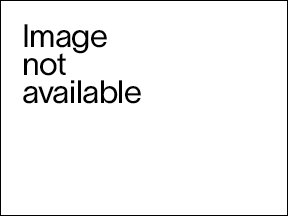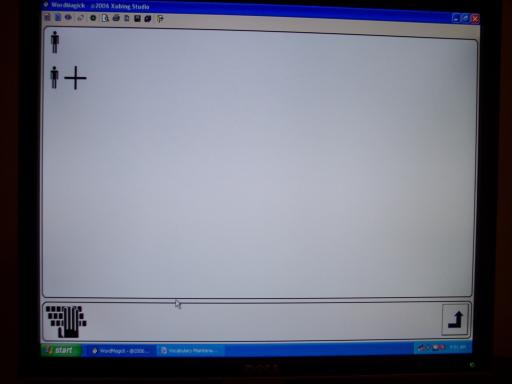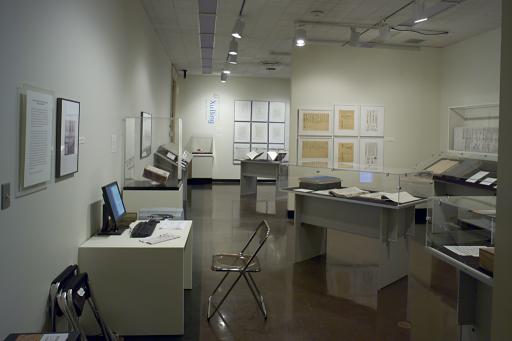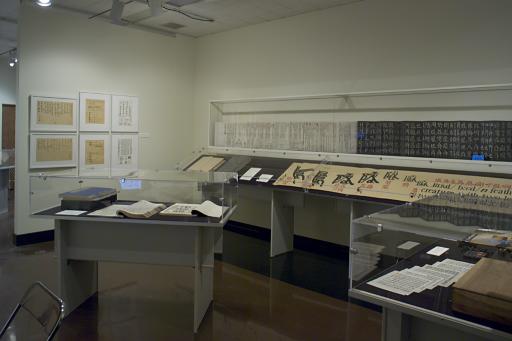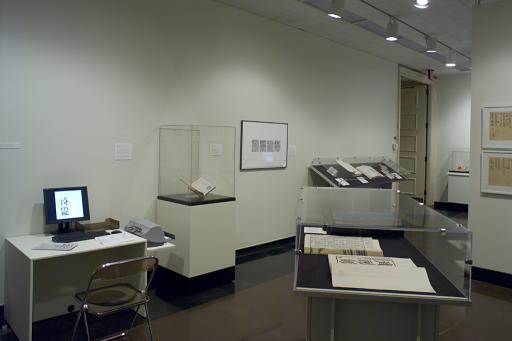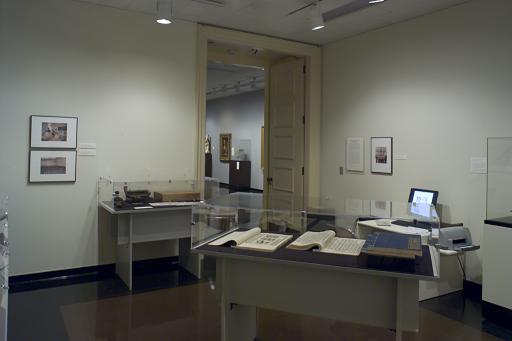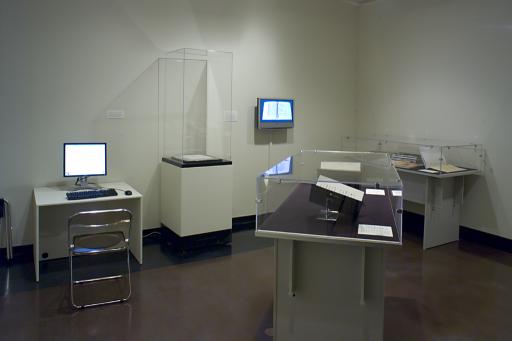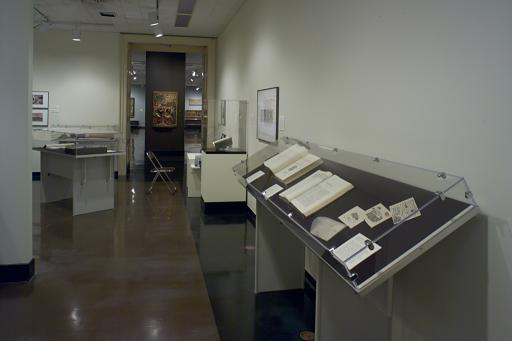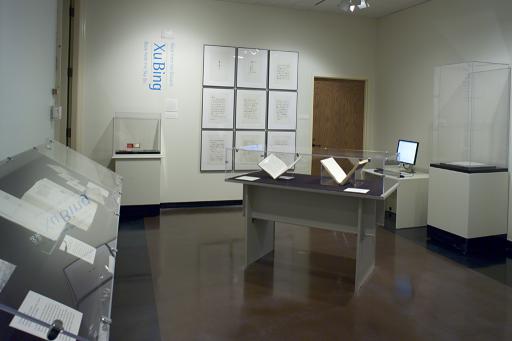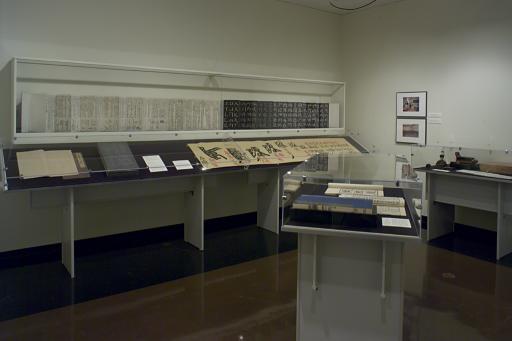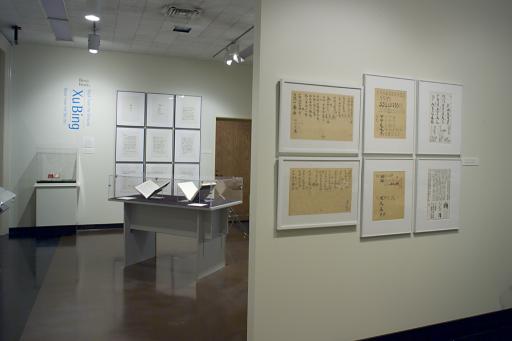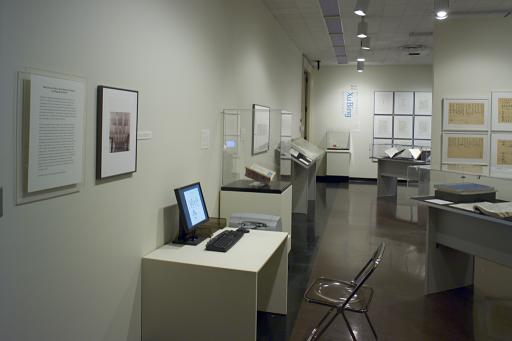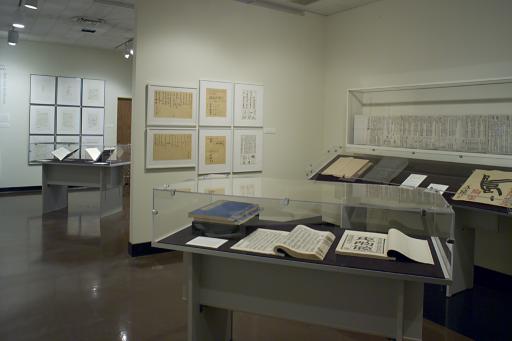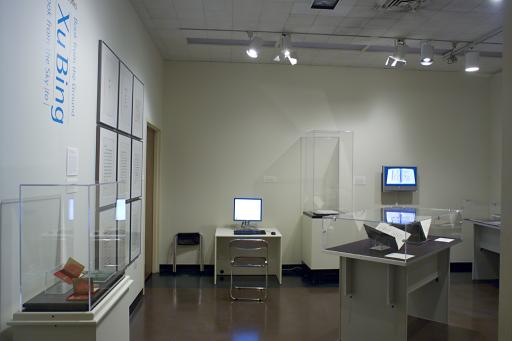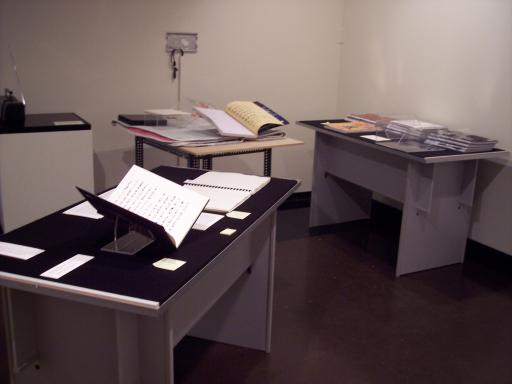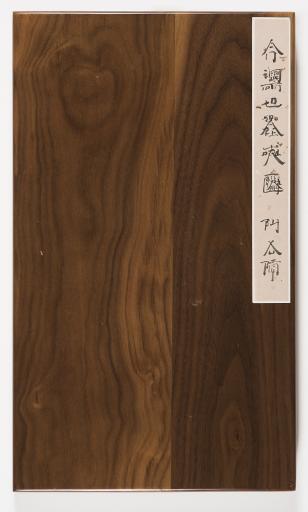Didactic – Art Minute
Episode 98 and Episode 101
Mar-2007, Stephen Goddard
I'm David Cateforis with another Art Minute from the Spencer Museum of Art. In the wake of China’s Cultural Revolution the Chinese artist Xu Bing designed 4000 meaningless characters, carved them as printing blocks, and used them to print elegant but unreadable books. When first exhibited in China with similarly printed wall and ceiling hangings, Xu Bing’s Book from the Sky struck a profoundly subversive note by challenging the authority of the written word. With this gesture Xu also established himself at the forefront of China’s artistic “New Wave,” and put into action his observation that “to change the written word is to strike at the very foundation of a culture.” Since immigrating to the United States in 1990, Xu Bing has continued to work with the book format as a vehicle for ideas about the interlocking roles of language, art, literacy and power. The exhibition Book from the Sky to Book from the Ground: Xu Bing’s Book Works, on view through April 29 at the Spencer, represents all of Xu Bing’s book-related projects to date and includes two computer workstations with interactive programs designed by the artist. With thanks to Steve Goddard for his text, from the Spencer Museum of Art, I'm David Cateforis.
Episode 101
Mar, Apr-2007, Ai-lian Liu
I’m David Cateforis with another art minute from the Spencer Museum of Art. The phrase “culture shock” connotes the confusion, awkwardness and anxiety we may feel when encountering cultures different from our own. For many transnational artists, this potentially negative experience sparks creative energy. Such is the case of Xu Bing, a Chinese artist who immigrated to the United States in the aftermath of the Tiananmen Square riots. His Introduction to Square-Word Calligraphy, for example, was inspired by his new, English-speaking country. On view through April 29 at the Spencer with several other Xu Bing works, Square-Word Calligraphy is styled after instruction books traditionally used by Chinese students to learn calligraphy by copying. But Xu actually has developed a script to write English words in Chinese calligraphic fashion. From a Western point of view, the work initially may appear very “Chinese.” Upon closer inspection, however, English speakers realize that they can read the words and even practice “Chinese calligraphy” without knowing a word of Chinese. Xu thus demystifies Chinese writing and prompts reflection about preconceived notions of language and culture. With thanks to Ai-lian Liu for her text, from the Spencer Museum of Art, I'm David Cateforis.
